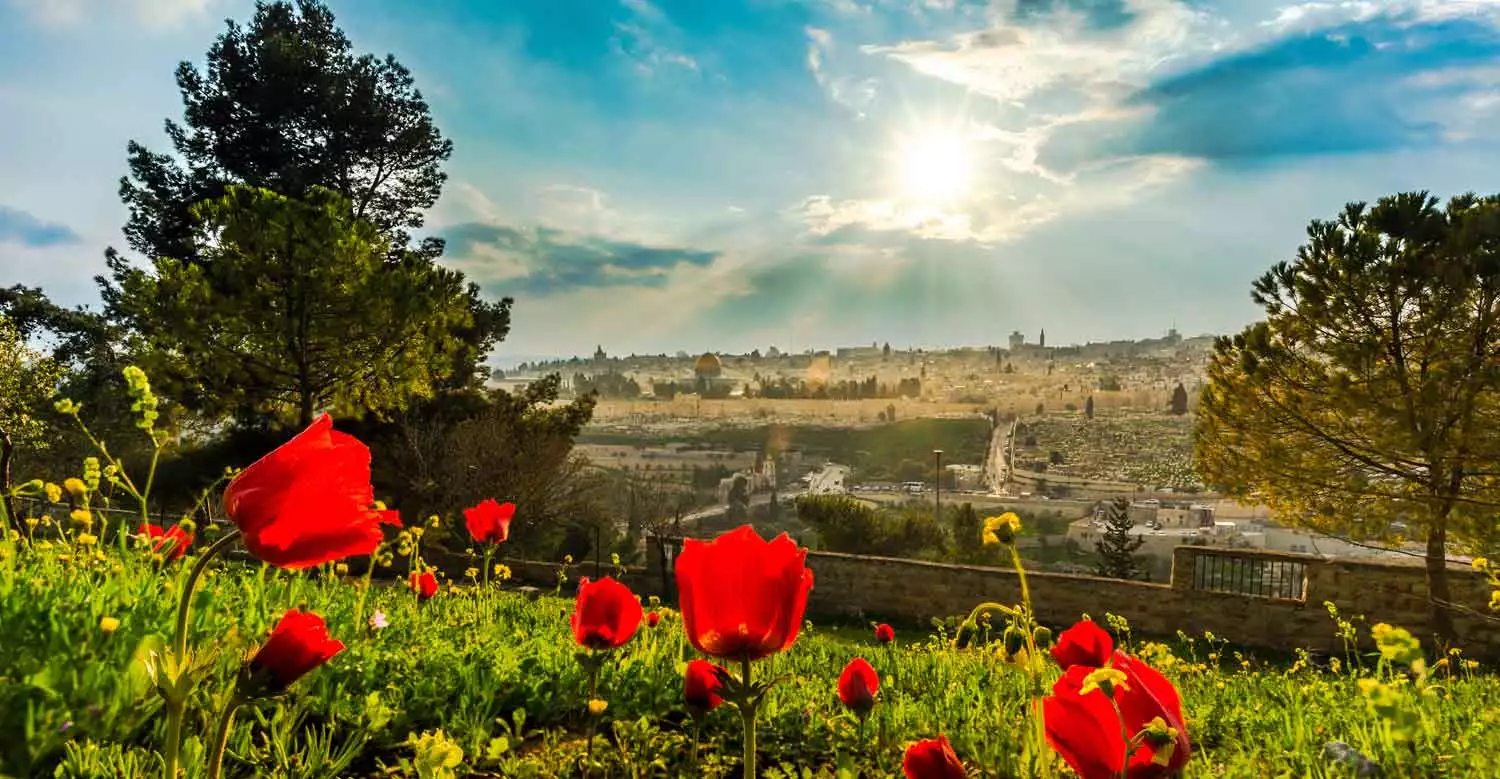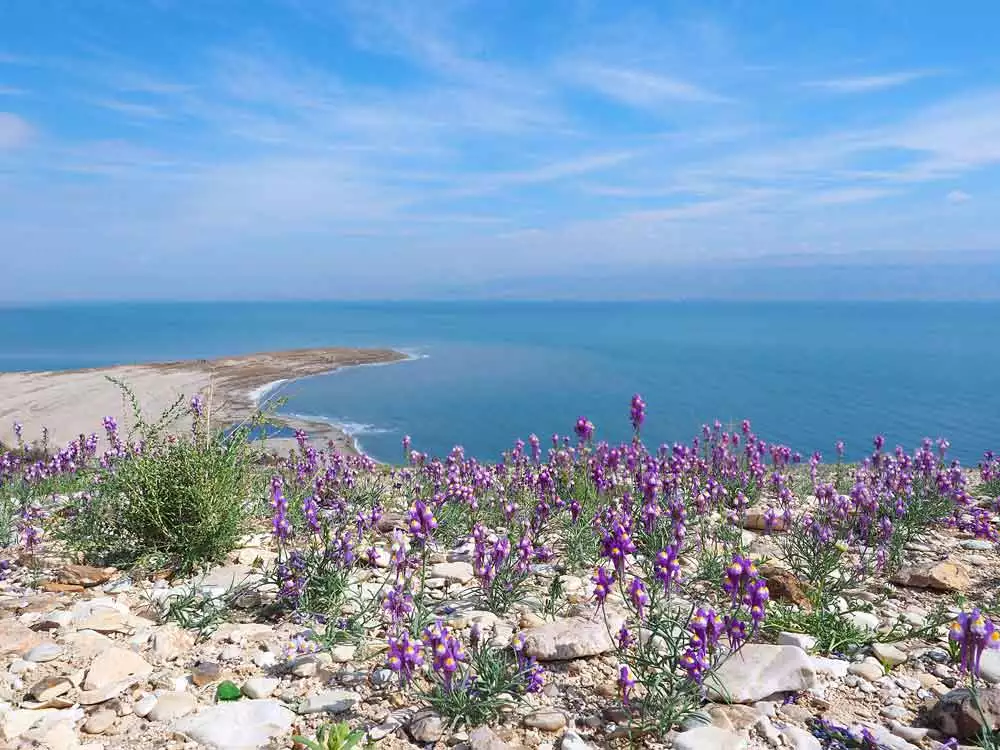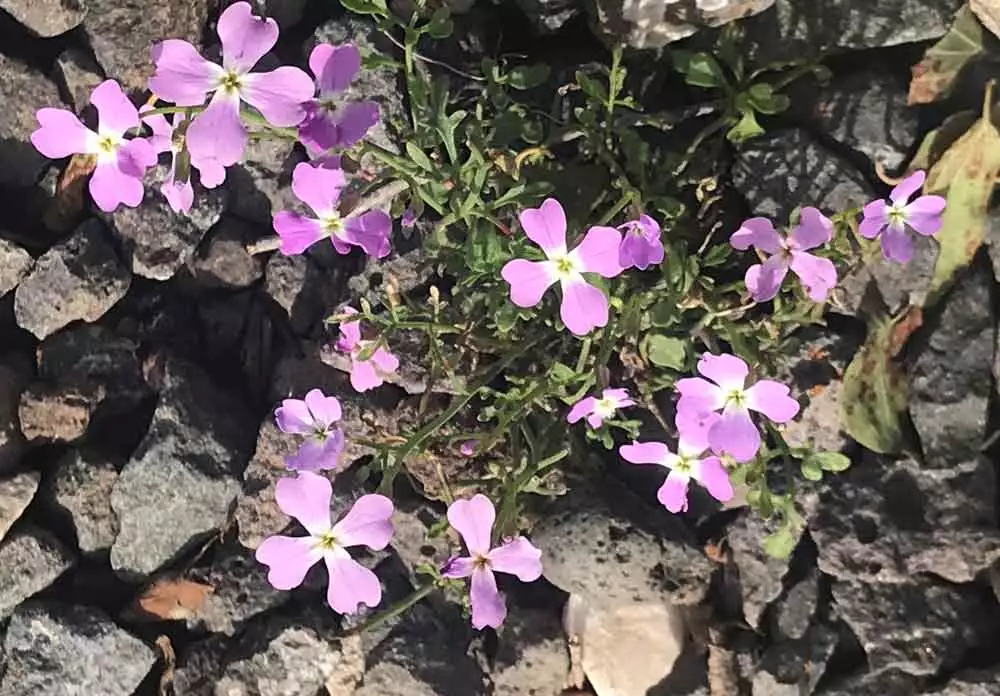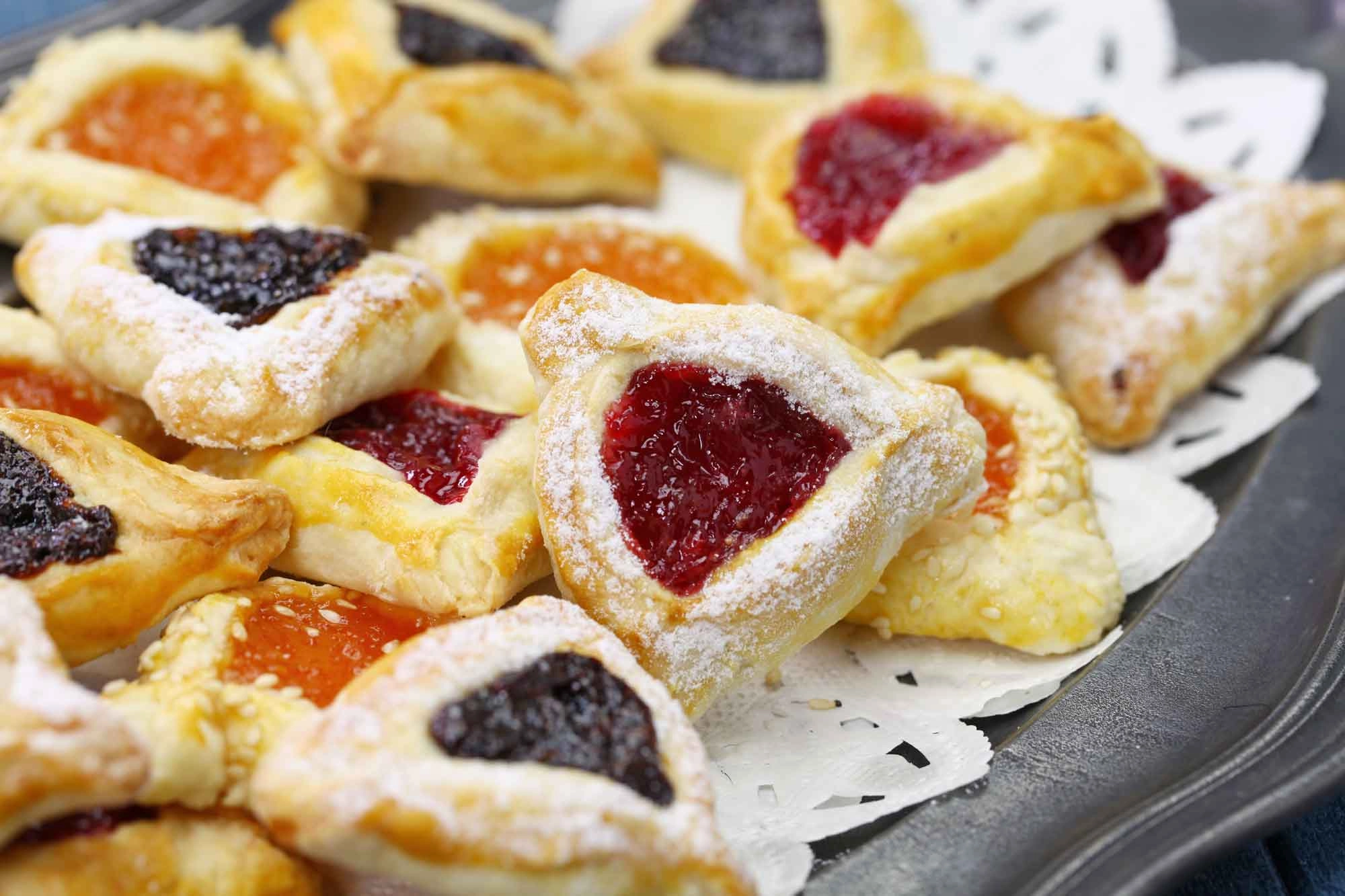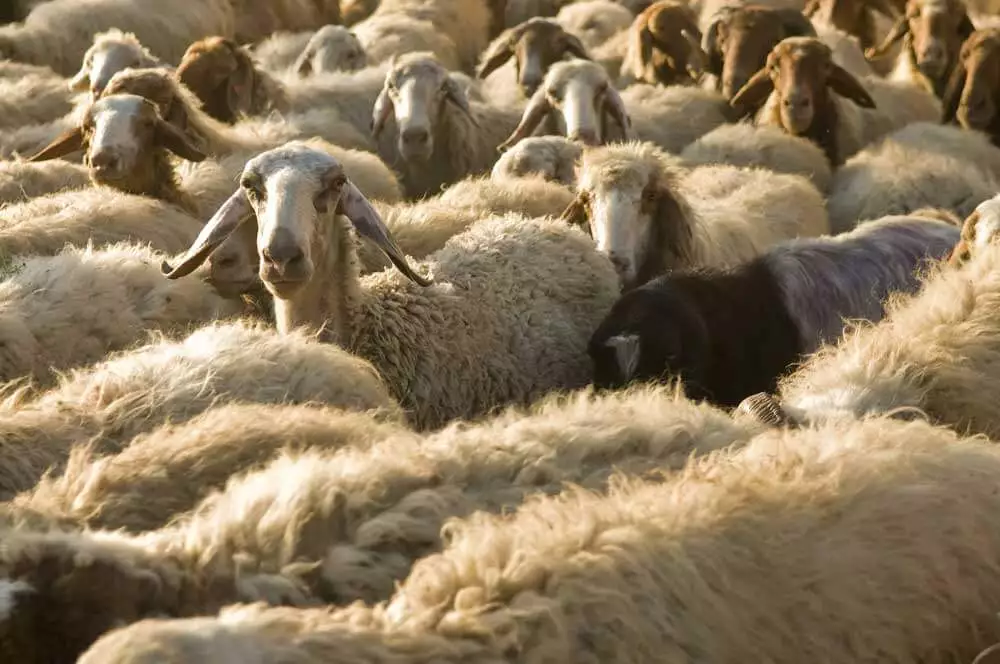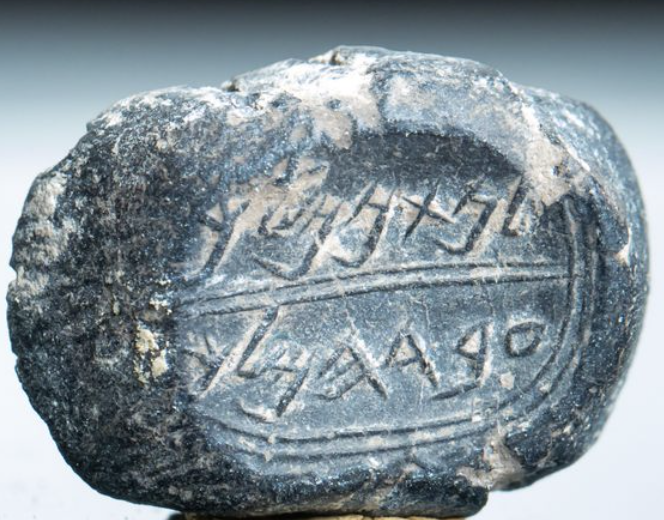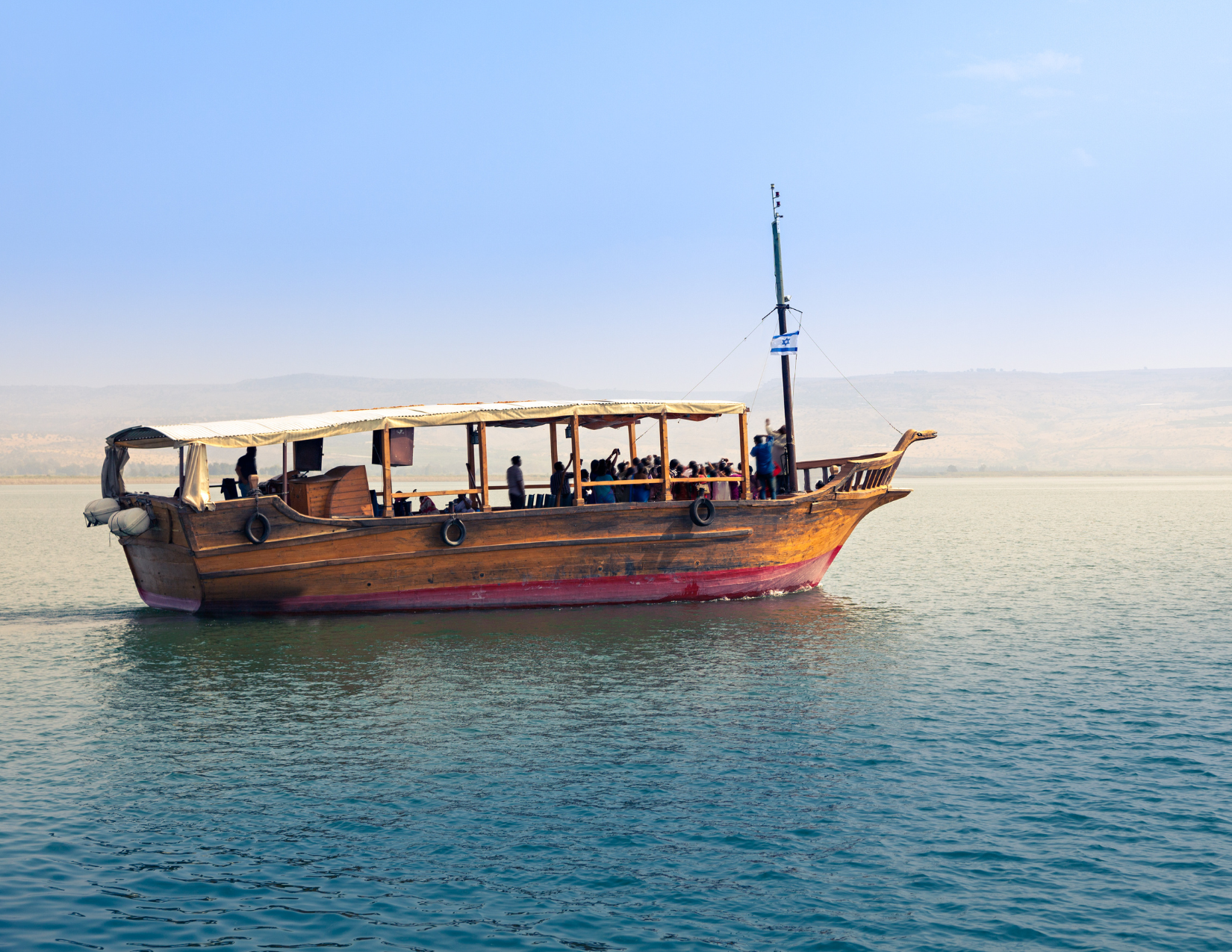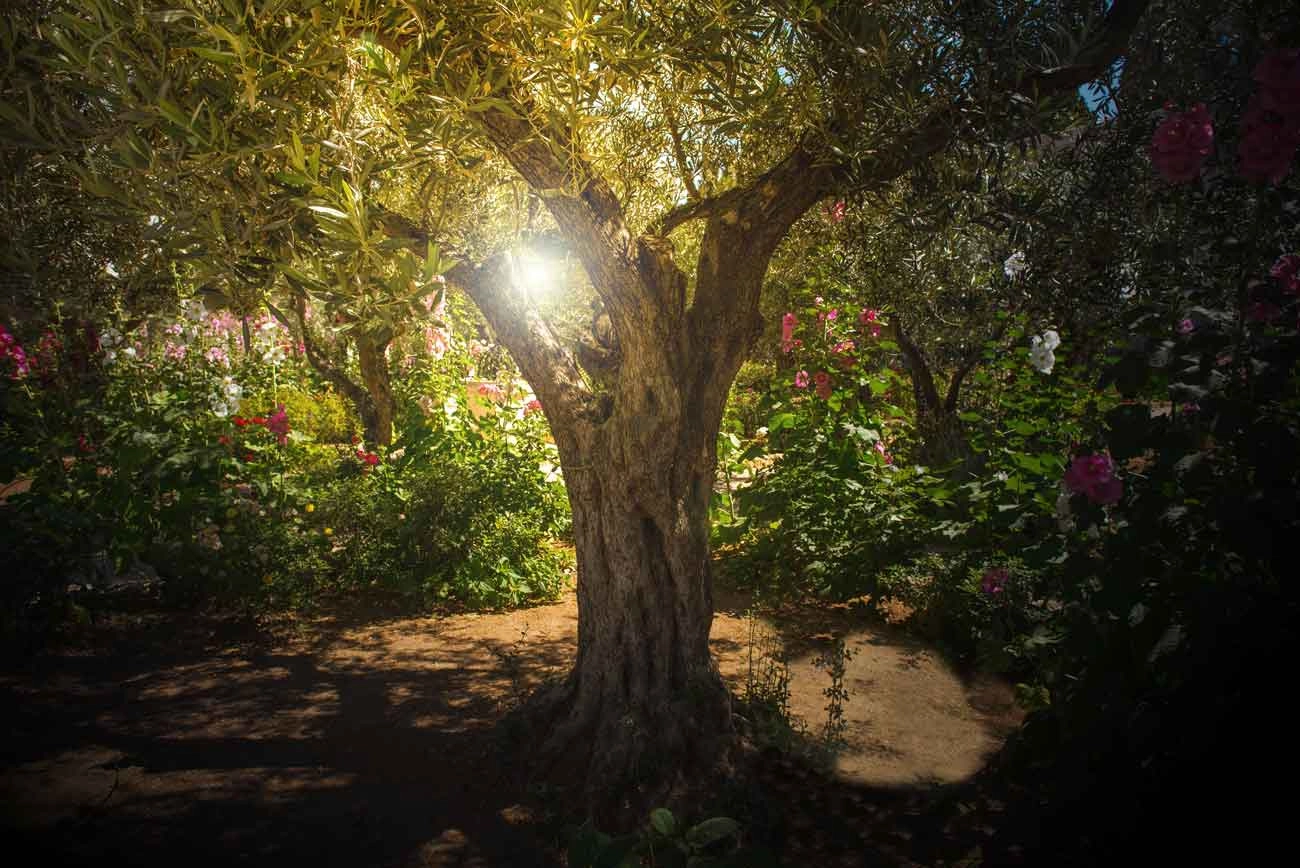“And why do you worry about clothes? See how the flowers of the field grow. They do not labor or spin. Yet I tell you that not even Solomon in all his splendor was dressed like one of these.” Matthew 6:28-29
On a hillside in the Galilee, Jesus spoke to a crowd that had followed him, eagerly seeking teaching. This area would have been a perfect natural auditorium, allowing him to be heard by the crowd. With a backdrop and setting of the sea below and birds and flowers all around them, (perhaps evidence that it was spring) He gave the most radical message they had ever heard.
The Sermon on the Mount is one of the most well-known teachings of Jesus, recorded in Matthew chapters 5-7. In this sermon, instructions of how to live our lives are condensed into one meaningful and engaging sermon. In this sermon, as he did in many of his teachings, Jesus uses examples of nature to illustrate his points, such the birds, salt and the beauty of flowers.
Many people think of Israel as a hot and arid Middle Eastern climate, which parts of it certainly are, especially during the summer when most of the nation dries up. Throughout Israel in the spring however, color abounds on the hills of the Galilee, the Golan Heights, Jerusalem and even, on occasion, the Dead Sea.
While summer weather is hot and dry, the rains come in the winter and give life to the dusty land. Then you see beautiful life come from the rain where perviously it would have seemed impossible. What a story of God’s grace in our lives!
During these faith-testing times, it is comforting and empowering to remember what Jesus said about the flowers and how much our Lord cares for us. Though these days may feel stormy, God’s grace will follow in Israel as it always does. He will make beauty from ashes. (Isaiah 61:3)
When you see the hills blanketed in beautiful flowers and think about these words from our Lord in our hearts, you can become overwhelmed by the love He feels for us. You nearly hear Him and see His face smiling upon you in the flowers.
We eagerly await the chance to welcome you as God’s promises and beauty are revealed to you in person once again in His Promised Land. Hi promises are new every morning and morning will come! In the meantime, we will continue to bring you a message of peace and hope and virtually bring Israel to wherever you may be!
Here are some of the flowers you may see in Israel when we see you “Next Year, in Jerusalem!”
The Dead Sea Flowers
While this is not a specific type of flower, these flowers are very special. The Dead Sea is known for being so salty (9.6 times saltier than the ocean!) that nothing is said to be able to live there. Located in the Negev Desert near where the Dead Sea Scrolls were located at Qumran. While it’s shores generally are barren, occasionally they have enough rain to make flowers bloom who’s seeds have laid dormant for years. 2020 has proven to be one of those years. The beauty of the flowers in the Dead Sea can not be understated.
These include swaths of Rainbow Toadflax, which comes in mauve, yellow or white, with orange dots’ pink-leaved rumex; yellow Faktorowsky’s Aaronsonia; and white mignonette along with bright spots of red poppies.
“Then I [God] will give you your rains in their season, and the land shall yield its increase, and the trees of the field shall yield their fruit.” (Leviticus 26:4)
Mt. Gilboa Iris
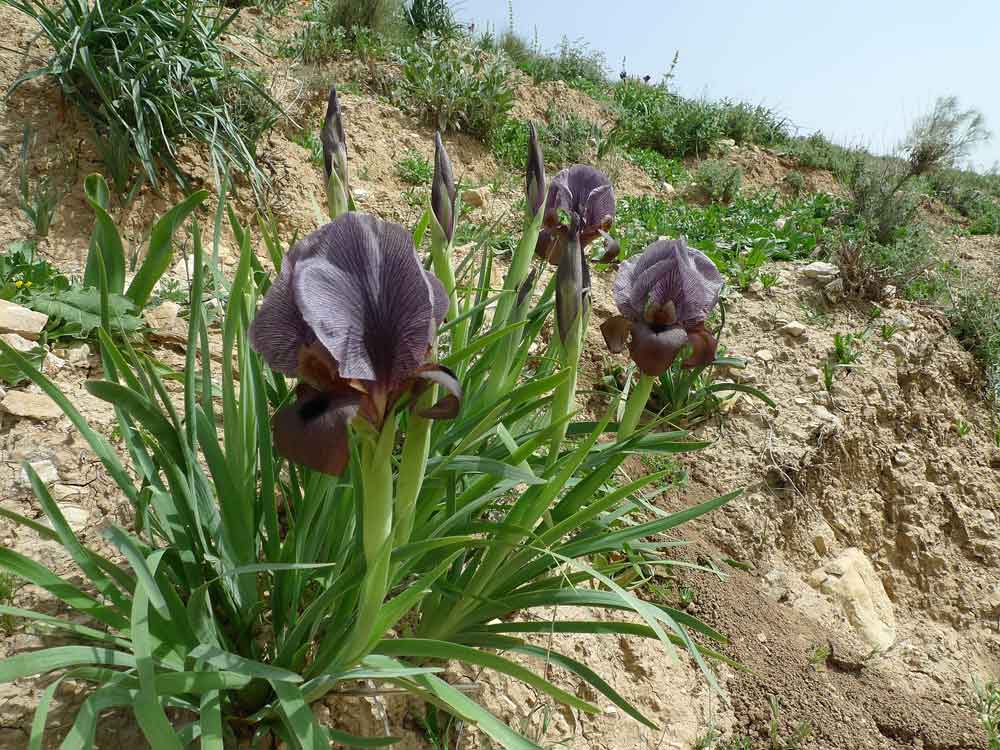
By Alastair Rae from London, United Kingdom – Iris haynei, CC BY-SA 2.0, https://commons.wikimedia.org/w/index.php?curid=39993619
This flower was brought back from near extinction due to over-picking in the 1960’s through outreach campaigns. This iris is a beautiful flower that is purple and white and very beautiful. It is now illegal to pick these flowers (as are many of the flowers in Israel, so it is best not to pick any) Mt Gilboa is known in the Bible as the location where King Saul fell upon his sword. This iris is now the symbol of Israel’s Society for the Protection of Nature.
Red Poppies (Red Anemones)
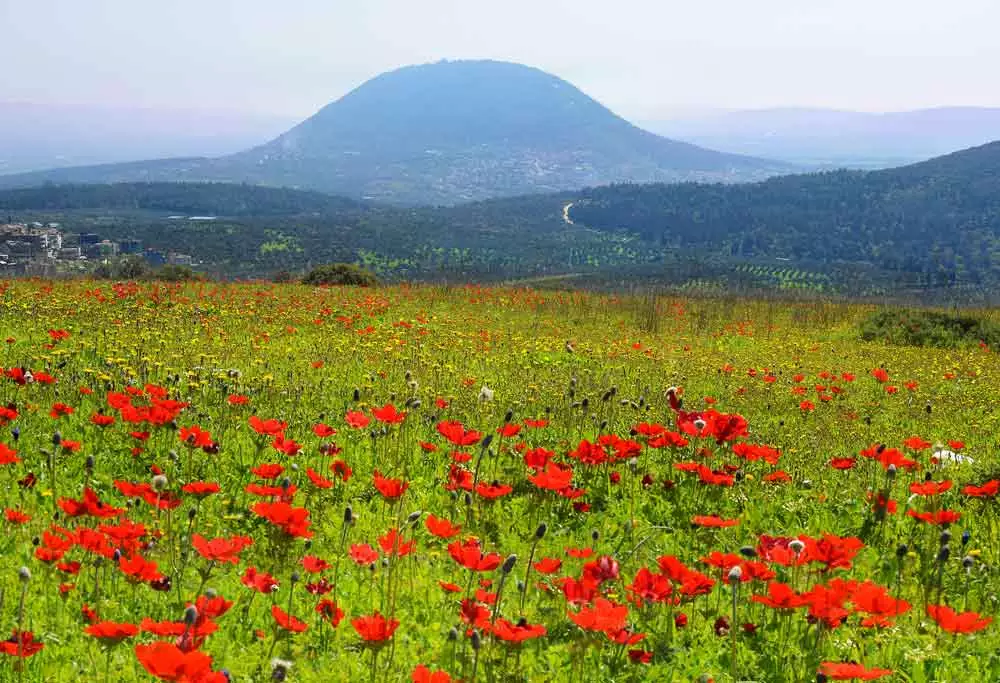
Red Poppies below Mt. Tabor
There are many flowers blanketing Israel in the spring, but there’s one flower that stands out in the crowd… the red poppy. Called calanit in Hebrew, it was named the national flower of Israel in 2013. These red beauties are found all over Israel in the spring and make for beautiful photos. Some believe that maybe Jesus was even talking about these flowers when he was giving the Sermon on the Mount, since “lilies” may have just been a generic term in translation.
Cyclamen
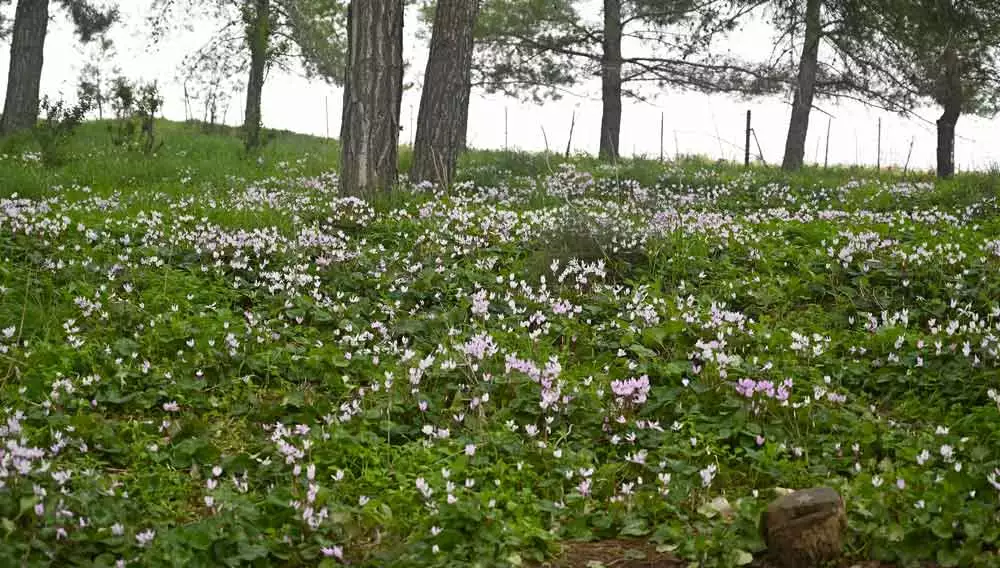
Cyclamen Hill
This hardy flower is well known for being on Cyclamen Hill in Northern Israel. In Hebrew they are called “rakefet” The hill offers a hike full of views including countless flowers and an overlook of the Jezreel Valley. This flower is easy to grow in many colder environments, so while you wait for your next trip to Israel, you can plant your own to remind you to “pray for the Peach of Jerusalem” (Psalm 122:6) whenever they bless you with their beauty.
Pretty Carmelite
These delicate little flowers grow in the rocks mostly in the area of the Galilee and close to the Carmelite Monastery at Mt Carmel. Not only do they grow there, but they resemble the Carmelite cross.

